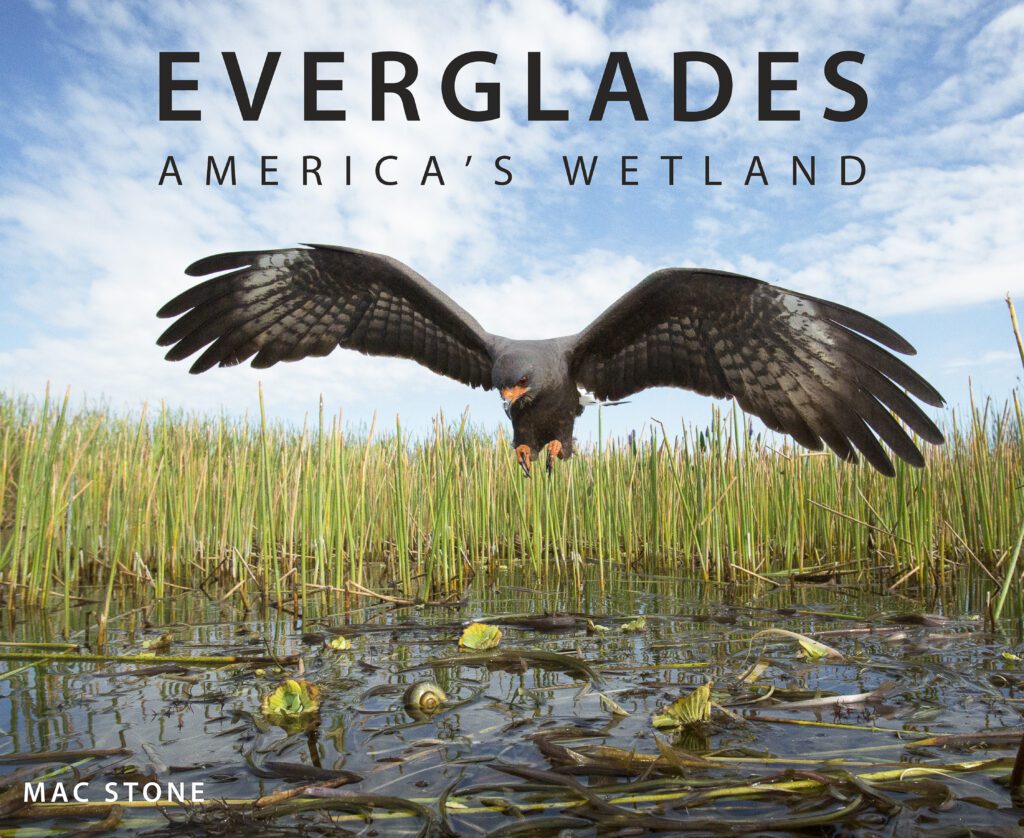Mac Stone captures Florida’s wetland in an unforgettable photo collection
For many, the Everglades have become synonymous with swamps, airboats, mosquitoes and gators. It’s become . . . shall we say, little more than a recreation destination.
But did you know Everglades National Park protects only one-fifth of the old Everglades ecosystem? Did you know a sheet of water covered nearly 11,000 square miles many years ago, extending from the Kissimmee River to Lake Okeechobee, and south to the estuaries of Biscayne Bay, the Ten Thousand Islands, and eventually to Florida Bay?
Although development has tried to erase the watershed’s natural ecosystem, it still serves as an important recharge area for the region’s drinking water, while providing a defense against hurricanes and tropical storms. Plant and animal species not found anywhere else on the planet still survive in the area.
Conservation photographer Mac Stone from Gainesville has captured stunning vistas of this subtropical wilderness, to make it alive again in our consciousness. His goal is to change people’s thinking about the swamps and wetlands.
Stone, who spent his youth exploring springs, swamps, and hammocks in North Central Florida, lived and worked for five years in the Everglades. There he photographed much more than the public face of Everglades that is the national park. As a biologist for the National Audobon Society, Stone took his camera where few are allowed to visit.
He waded through swamps, laid in wait for the snail kite, tracked the Burmese Python, and captured the skies when they were painted like a canvas. He photographed from the air and underwater. He spent thousands of hours in the field taking 70,000 pictures, then months culling them to 240 images that truly showcase the Everglades. His 340-page coffee table book, published by University Press of Florida, is called Everglades: America’s Wetland.
In the book, he takes readers on a visual journey of the Everglades, sharing sharks in the mangroves, the Florida panther, the American alligator, roseate spoonbills, and the ghost orchid. He offers intimate close-ups of the national park, Corkscrew Swamp, Fisheating Creek, and other less-visited sites. The book includes exclusive essays from top experts in Everglades conservation, which further broadens the reader’s perspective. A special foreword by Michael Grunwald tells the Everglades’ history and discusses the dangers of destroying the ecosystem.
Stone, who became interested in photography as a youth, has taken his camera to remote places like Ecuador, where he worked with Wildlife Conservation Society biologists in the Amazon rainforest. He also has lived in a small village on the Cangrejal River in Honduras, where he taught photography to underprivileged youths.
The winner of the Save Our Seas Foundation Marine Conservation Photography Grant, he is an official photographer for Savage Race. In addition to his work as a photographer, Stone is a product tester for Columbia Sportswear, a Google Trekker, and executive director of Naturaland Trust.
His website, www.macstonephoto.com, shares images from the Everglades that didn’t quite make the cut for the book, along with videos of his expedition. It also features prints from the South Florida Everglades, North Florida, and Lowcountry, as well as offers stunning images of manatees and the snapping turtle.
For more information on how to purchase Mac Stone’s book, visit www.EvergladesBook.com.
To view more fine art prints and for purchasing information, visit www.macstonephoto.com.
CREDITS
story by CHERYL ROGERS
photo art shown by MAC STONE

